Then & There Johann Ridinger: Engraver of horses, hounds, hunting and falconry
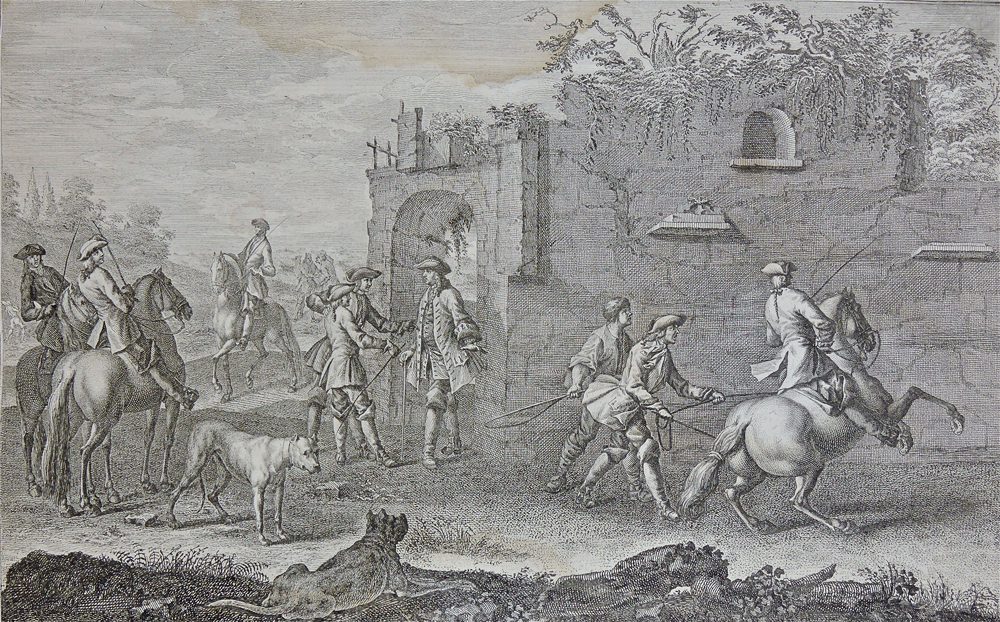
Article and photos by Richard Hooper
Johann Elias Ridinger’s (1698-1776) engravings covered nearly every subject imaginable. He produced some 500 portraits, religious scenes and allegories – a prodigious accomplishment on its own. Clearly, however, his favorite subjects were hounds, horses, animals and nearly every aspect of the pursuit of game known at the time, as there are about a thousand works on these subjects bearing his name.
Born into poverty in the city of Ulm, in the state of Bavaria in Germany, he began his career as a sign painter and later apprenticed at the age of 14 to a local artist. It was a most unsatisfactory apprenticeship for Ridinger, as he received little training in art. Rather he was mostly used for mixing paint, cleaning brushes and performing other menial tasks.
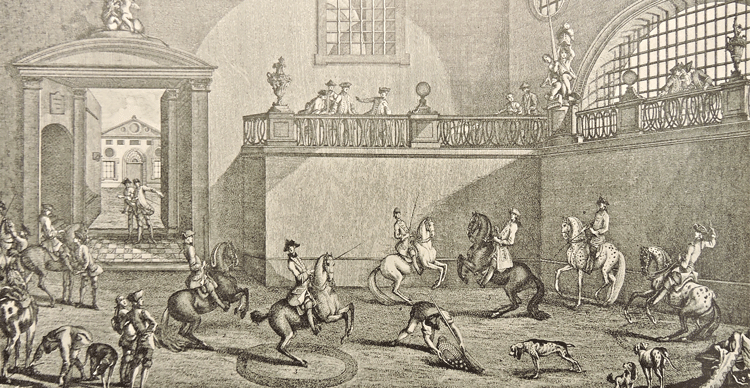
Released from his apprenticeship after five years, he moved to the more affluent Augsburg, where he studied under several masters. There, he caught the attention of Count Metternich and was invited by him to stay at Ratisbon, where he was introduced to the many forms of hunting and falconry. He met royalty and observed the activities at the count’s riding academy.
The pursuit of game was a primary activity for the aristocracy. It provided food and was a form of ritualized socializing. It also manifested itself in displays of power, such as the pageantry of the chase.
Another, much less grandiose, manifestation was against people who could engage in subsistence farming. They could grow crops for themselves, but they could not protect those crops with fences that a deer could not jump over or a wild boar could not break down. The abundance of well-fed game was paramount for the nobility.
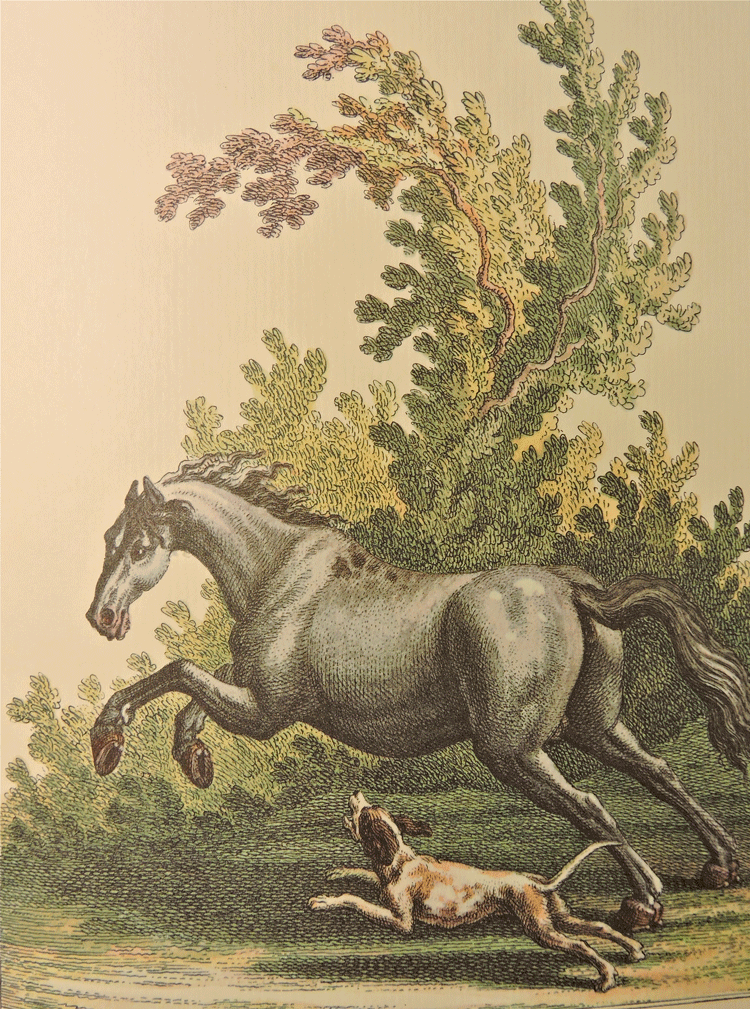
Although nearly everything was hunted, stag hunting carried the most prestige, and the pursuit of unusually large and many-pointed antlers as trophies was carried out with more passion than searching for the holy grail. Captured stags were given special diets to determine the effect on antler growth, with the intention of introducing a new, beneficial diet into the wild.
It seems that every protuberance on the antlers ending with a point was counted. In his series of engravings, freely translated (as are all of the titles) as Most Wonderful Stags, Ridinger chronicled many of these trophies.
One was of 66 points shot by the first King of Prussia, Fredrick I. The antlers were mounted and eventually inherited by his son, King Frederick William I, who did not want them — his inclinations were much more subdued than those of his flamboyant father. However, the Elector Frederick of Saxony wanted them badly enough that, in what must have been an art of the deal at the time, he got the antlers, while the king received an entire company of soldiers in exchange.
Among Ridinger’s engravings of falconry, he shows the use of the eagle-owl, a huge bird of about 30 inches in length with a wingspan in the range of 6 feet. A falconer would set the owl to flight with the brush of a fox attached by a cord to its leg. The purpose was to lure a very high-flying kite, whose intent was to steal away what it perceived as the owl’s dead prey, to a lower altitude at which point another falconer would release his falcon in pursuit of the kite.
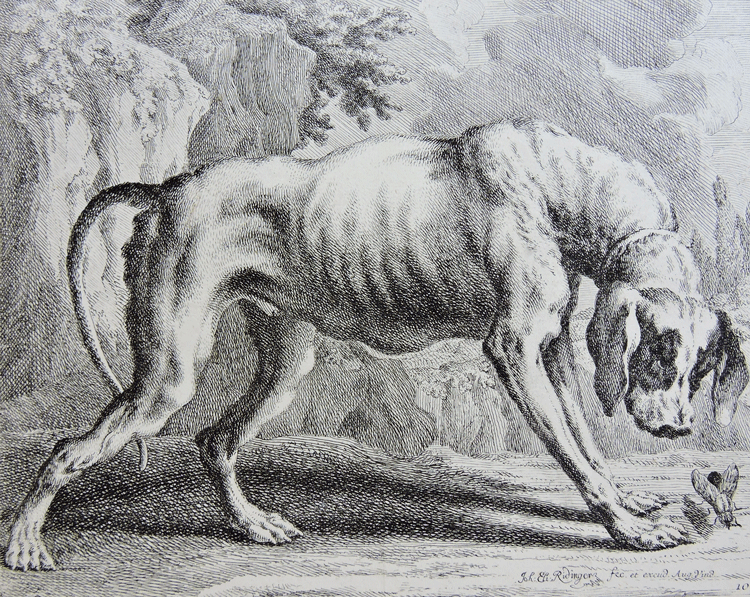
Horses were a fascinating subject for Ridinger. From numerous works depicting breeds and a series titled On the Color and Complexion of Horses, to their use in hunting, their training and the environment at riding academies, the horse is the singular subject of, or a major part of, the scenes in many of his engravings.
Some of Ridinger’s finest work, such as The New Art of Riding and The New Riding School, depict the activities at riding academies. The New Art of Riding captures lessons being held outdoors, while the scenes are inside in The New Riding School. Both books show congested areas filled with intense activity as riders practice haute école.
In The New Riding School, the arenas have balconies for spectators. In one engraving from that series, detail is added that shows a man engaged in the practical activity of mucking up the manure from the floor while hounds roam freely about.
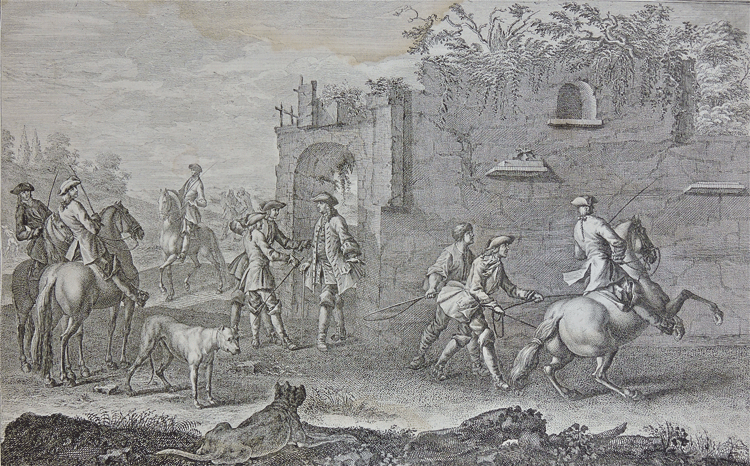
The roaming hounds are in many of Ridinger’s riding academy scenes and must not have been viewed as an annoyance. Indeed, there are scenes where, in the midst of high school riding, people are wandering around waving flags and beating drums to accustom horses to these distractions that could be encountered during parades and military campaigns.
Drums also were used to drive game. The hounds are there as part of the natural habitat of the riding school and of life.
Hounds also filled a number of Ridinger’s engravings as a singular subject or as part of the pursuit of game, like the horses. They, too, were one of his favorite subjects.
Some of what Ridinger depicted is no longer practiced. However, much of it still resonates aesthetically (sometimes with curious overtones) and, with its depth of detail, so richly descriptive of his time and place, it is more than worthy of our interest today. ML


